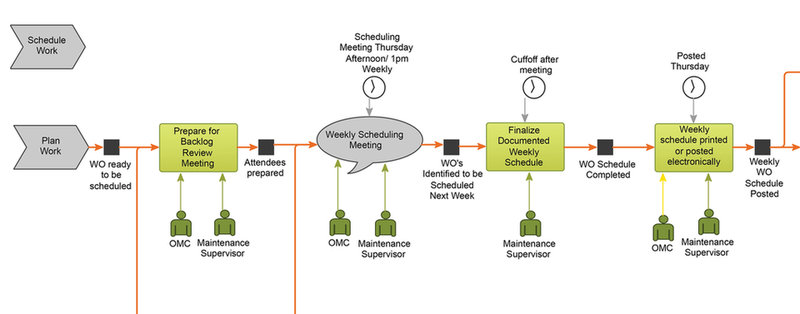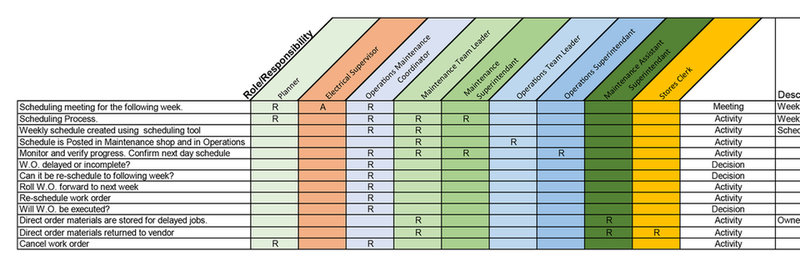COMPANY INSIGHT
Sponsored by Torbjörn Idhammar, President IDCON INC.
Improving Reliability and Maintenance at your plant
Food manufacturers face tough challenges that can impact reliability and maintenance practices. Whether it is food safety regulations or just responding to customer demands for new products. These challenges will often require some sort of change at the plant.
Regardless of how people are going about a change, the human element of change is universal. People do not like change, especially if an outsider tells them HOW to change. Having worked in many different organizations and in many different countries, I’ve reflected a lot on what’s needed to improve and change work methods. I don’t have all the answers, but I believe I have found some valuable points.
Good maintenance is highly dependent on human behavior
Machines largely run the operation in a plant. The people who run the machines have to follow the pace of both the machines and the production process. Poor operating practices are very noticeable. Maintenance efficiency is developed through better work processes. For example:
- An inspector can carry out detailed inspections, or just walk around and look busy.
- A maintenance job can take 10 hours or four.
- A planner can plan a task very well, or just order spare parts.
As a maintenance manager, it’s crucial to understand that 90 percent of maintenance effectiveness depends on human behavior.
Describe and relay a clear picture of change
Maintenance improvements need to be clearly defined. It’s not enough to just explain how to get there, you must be able to provide a clear picture of what things are supposed to look like in the future. For example, if you want to improve planning and scheduling, there should be a description of what the work process should look when you’ve improved.
At IDCON we define a Work process as something that is:
- Documented
- Executed
- Followed up
The future picture is summarized in these bullets as headers. Let’s take a look at improving Planning and Scheduling as the example. Under “documented” you would describe what documents should be in place when you’re are finished with the improvements. At the bare minimum you want a clear workflow, a definition of planning, defined priorities and so on.
The work notification priority chart, shown in Figure 1, would be part of documenting a planning and scheduling improvement A guideline such as this should be highly visible throughout your plant and communicated widely.
Figure 1: Work notification priority chart
Communicating
If you want to get people involved, think about HOW you communicate. Compare these questions:
Our documentation for work order flow is really bad, why are we performing so poorly?
Can our documentation for work order flow improve?
I believe the project group would work in the same direction in both cases, but with much more enthusiasm and drive if you chose the second more inclusive question.
Since maintenance is based on human behavior, it is important that we as maintenance leaders think about how we relay the message. Words are important! Speaking of communication, it’s not enough just to post a priority guideline like Figure 1 in a notebook, it must be highly-visible and you must give feedback when the wrong priority is chosen by the person requesting the maintenance work.
Project plan and RACI (Responsible, Accountable, Consulted, Informed)
A manager or an executive group has to decide WHAT needs to be done, but one suggestion is to allow a work team to decide HOW, then document a detailed plan and develop a RACI. As a manager, you should expect an improvement plan from the team. The plan needs to have specified activities and a deadline. In order to delegate who is going to do what, a RACI-matrix should to be documented for every main activity.
Your work process flow should identify what roles are responsible for each task or meeting. It should also identify key cut off times. The figure below is a partial work process flow for scheduling maintenance work.

Figure 2: 2c8 software model of a work process flow.

Figure 3: RACI chart showing key elements of the maintenance scheduling work process flow.
At our client sites, an extremely detailed project plan is often our savior.
The examples above are just a few possibilities of what can be utilized in an improvement project. If you have good examples of how your plant made (or is making) changes to improve the reliability and maintenance practices we’d love to hear about them. You can email us using the contact information below or if you want to share your story, we invite you to submit an abstract for our IDCON Reliability and Maintenance Conference in September 2019.
